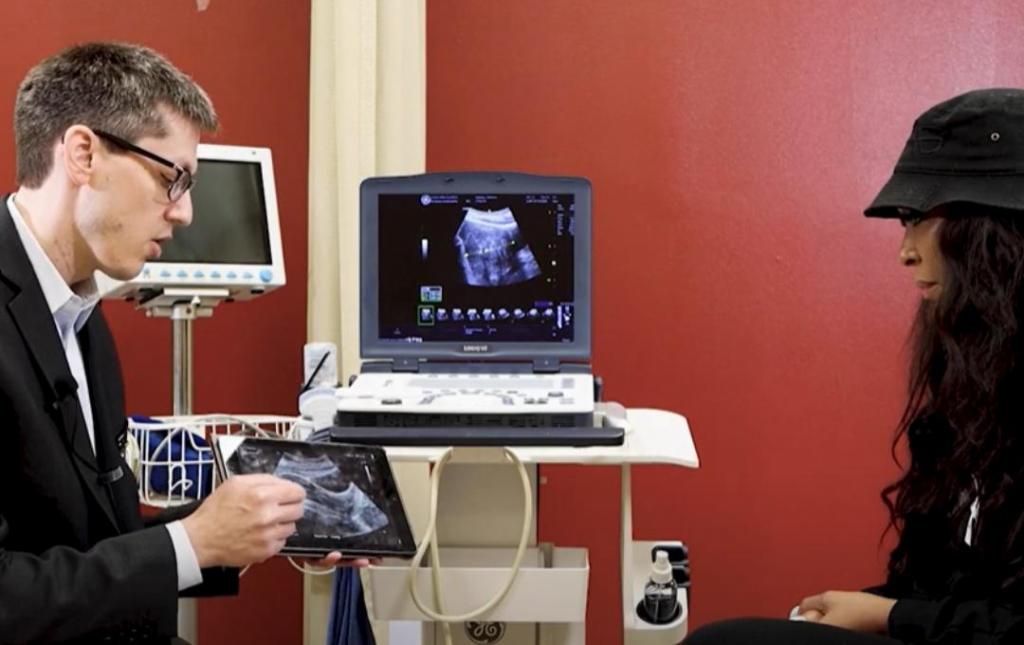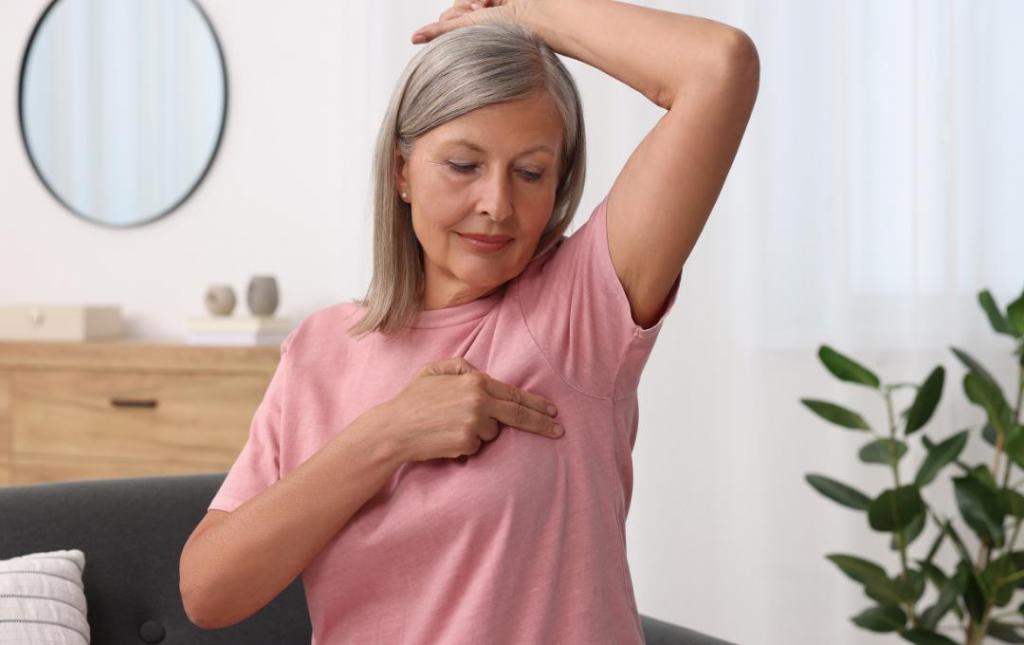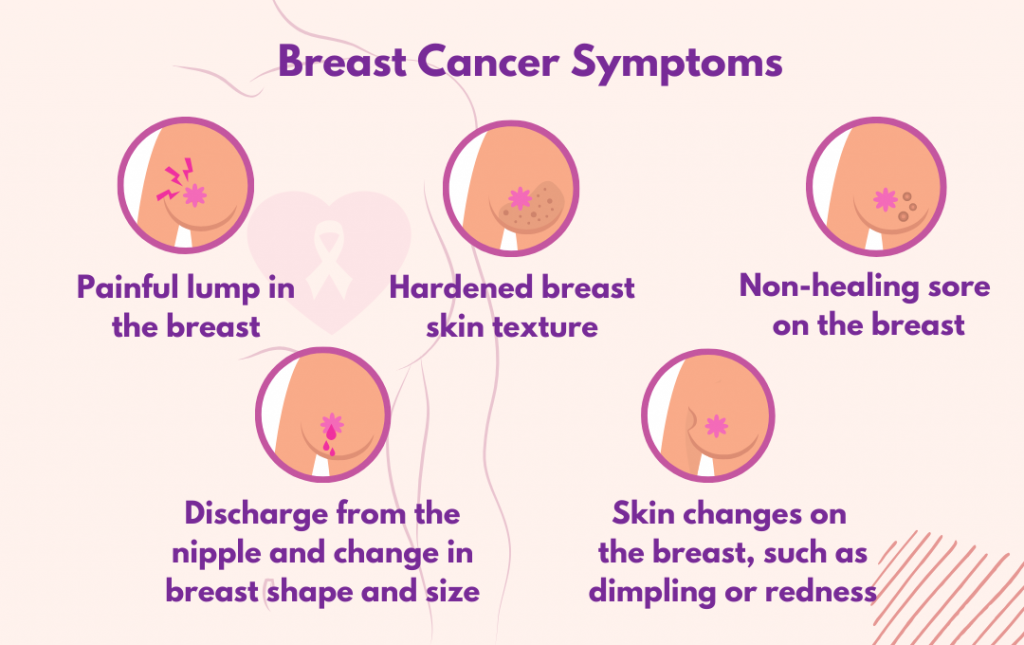
During Breast Cancer Awareness Month, we often focus on the importance of early detection and prevention. However, it’s equally crucial to be aware of other women’s health concerns, such as uterine fibroids.
Fibroids are the most common noncancerous tumors in women of reproductive age. While they are not cancerous, they can cause significant symptoms and impact quality of life. Early detection of fibroids is essential for managing symptoms and exploring treatment options.
Can Uterine Fibroids Cause Breast Tenderness and Pain?
The connection is hormonal. Both uterine fibroids and common breast symptoms like swelling, and , tenderness before a period are heavily influenced by estrogen. Increased or fluctuation estrogen levels are the primary drivers of fibroid growth. Since the breast tissue is also highly sensitive to these same hormonal changes, a hormonal imbalance that fuels fibroids also can contribute to severe, persistent, or cyclical breast pain or tenderness. Breast pain usually disappears after a period is over, and these hormone levels return to normal
Yet, suppose you have breast pain that is severe, persistent, or unrelated to your menstrual cycle. In that case, it is important to talk to your doctor to rule out other underlying conditions, such as fibroids. Fibroids, noncancerous growths in the uterus, are common and affect up to 80% of women at some point in their lifetime. Fibroids can range from small, undetectable growths to large masses weighing several pounds
While breast pain isn’t a classic symptom of fibroids, it can occur in some cases, especially if the fibroid is large or pressing on surrounding organs.
Fibroids are noncancerous growths in the uterus. They are common, affecting up to 80% of women at some point in their lifetime. Fibroids can range from small, undetectable growths to large masses weighing several pounds.
The Link Between Fibroids and Breast Cancer
Hormones play a significant role in both fibroids and breast cancer development. Recent studies suggest a potential link between these two conditions.
Research indicates that women with fibroids may have a slightly higher risk of developing breast cancer. This increased risk might be due to factors like elevated estrogen levels, genetics, and prolactin.
- Estrogen: Elevated estrogen levels can promote the growth of both fibroids and breast cancer cells.
- Genetics: Women with a family history of fibroids or breast cancer are more likely to develop both conditions.
- Prolactin: Prolactin is a hormone produced by the pituitary gland. It can stimulate the growth of fibroids and breast cancer cells.
However, it’s important to note that not all women with fibroids will develop breast cancer. The same study suggests that women with fibroids who are diagnosed with breast cancer may have a lower mortality rate.
If you have concerns about fibroids or breast cancer, it’s vital to consult with your healthcare provider for regular screenings and personalized advice.
Estrogen: A Key Player in Women’s Health
is a hormone that plays a key role in many aspects of female health. Understanding the role estrogen has in the development of several health conditions, can help women be proactive about their health.
Factors Affecting Estrogen Levels:
- Age: Estrogen levels naturally decline with age. However, women who go through menopause later in life have a longer exposure to estrogen, which can increase their risk of developing certain conditions.
- Weight: Estrogen is produced in fat cells, so women who are overweight have higher estrogen levels.
- Genetics: Women with a family history of fibroids or breast cancer are more likely to develop these conditions.
- Reproductive history: Women who start menstruating early and go through menopause late are more likely to develop fibroids.
- Certain medical conditions: Some medical conditions, such as polycystic ovary syndrome (PCOS) and endometriosis, can cause estrogen levels to rise.
Learn more about how high estrogen levels can impact the growth of uterine fibroids.
Fibroids’ Top Warning Signs
Fibroids can lead to a wide range of symptoms and these can vary in severity.
Signs of fibroids include:
- Heavy menstrual bleeding
- Prolonged periods
- Pelvic pain or pressure
- Frequent urination
- Constipation
- Backache
- Pain during sexual intercourse
- Enlarged abdomen
If you have any of the symptoms listed above, it is important to see a doctor to rule out fibroids or other underlying medical conditions.
Take our Fibroid Symptom Quiz and Connect with A USA Fibroid Specialist
Managing Your Fibroid Health
If you are experiencing fibroid symptoms (like heavy bleeding or pelvic pain) or breast pain/lumps, it is important to consult a healthcare provider immediately. Early detection and diagnosis are essential for improving outcomes for both conditions.
If you notice any concerning changes in your breasts, your first step should be to see your primary care physician or a specialized breast health center. They can ensure you receive appropriate screening, diagnostic imaging (like mammograms or ultrasounds), and timely referrals to breast cancer specialists if needed.
Our focus is on diagnosing and treating uterine fibroids. USA Fibroid Specialists, are interventional radiologists and use advanced, image-guided technology such as ultrasounds and MRIs to accurately diagnose fibroids.
We have the specific expertise to:
- Accurately assess the size, location, and type of fibroids.
- Rule out other causes for your pelvic symptoms.
- Provide you with the most up-to-date information on modern treatment options, such as Uterine Fibroid Embolization (UFE).
- Help you develop a personalized, uterus-preserving treatment plan that is right for you.
Key Takeaways
Women with fibroids should be aware that they are at a higher risk for breast cancer and should monitor their health accordingly. While fibroids are not usually cancerous, it is important to monitor your health and seek treatment early if you experience fibroid symptoms.
Fibroid specialists can perform a variety of tests to assess the size, location, and type of fibroids you have. This information is essential for developing a personalized treatment plan.
UFE: A minimally Invasive Treatment

It is important to know your fibroid treatment options so that you can make an informed decision about the best way to manage your condition. Uterine fibroid embolization (UFE) is a minimally invasive procedure that is an effective treatment for uterine fibroids.
Benefits of UFE include:
- It is a minimally invasive procedure, which means that there is less pain and scarring than with a myomectomy or hysterectomy.
- It has a shorter recovery time than surgery. Patients can go home the same day as the procedure and return to work within a couple weeks.
- It is effective in shrinking fibroids and reducing symptoms.
- It is a safe procedure with a low risk of complications.
- It preserves the uterus and a woman’s fertility.
USA Fibroid Centers for Fibroid Treatment
Our knowledgeable fibroid specialists at USA Fibroid Centers can provide the support you need to deal with fibroids. Our accredited fibroid specialists are experienced in UFE and will help you get the treatment you need that can reduce and eliminate uncomfortable symptoms.
Contact us at 855.615.2555 to schedule an appointment to learn more about UFE.




